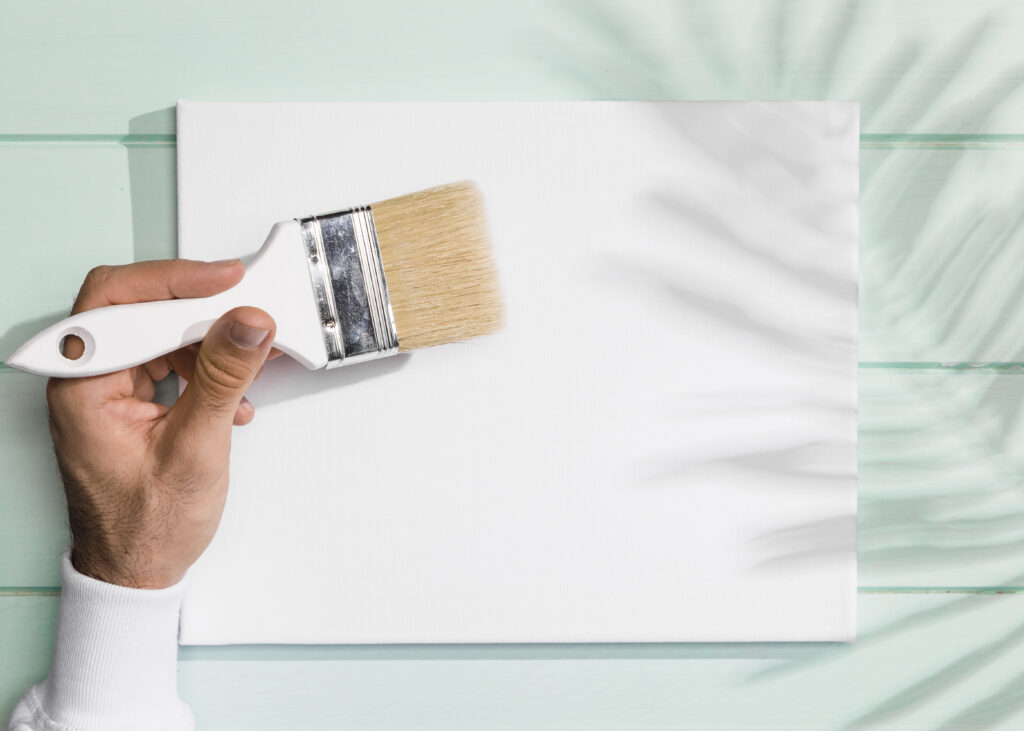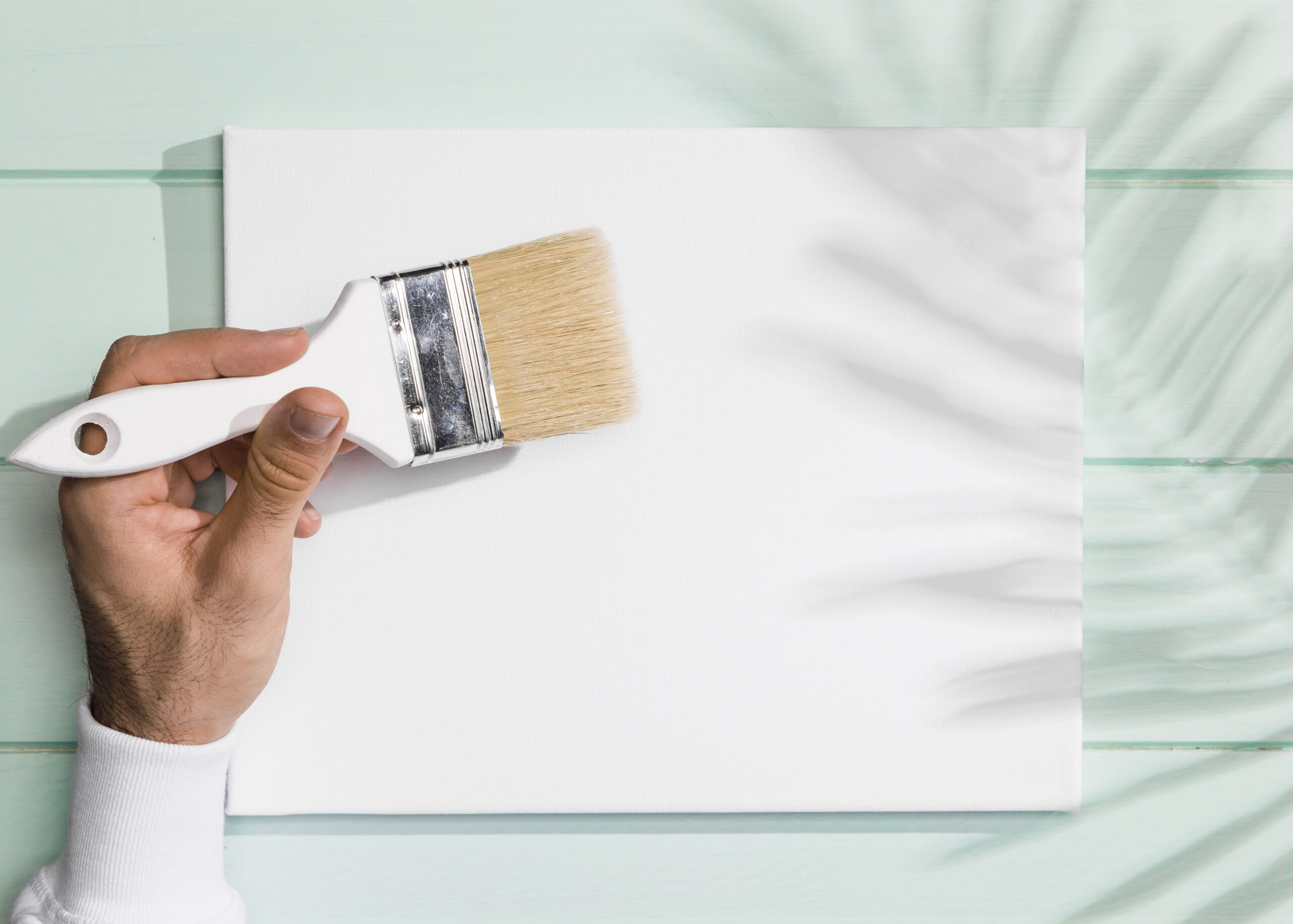The Power of Wall Paint
Your home Space With The Perfect Wall Paint is more than just bricks and mortar; it’s a reflection of your personality and style. And when it comes to shaping the ambiance and character of your living spaces, few things wield as much influence as the humble yet transformative power of wall paint. The colors adorning your walls are the backdrop to your life, setting the tone for every moment, from your morning coffee to your cozy evening by the fireplace.
Table of Contents

- Introduction
- Setting the stage for the importance of wall paint in home transformation.
- The Psychology of Color
- Exploring how colors impact our emotions and the atmosphere in our spaces.
- Choosing the Right Wall Paint Color
- Tips on selecting the perfect color for each room.
- The role of color samples in decision-making.
- Types of Wall Paint Finishes
- Matte Finish: Benefits and ideal spaces.
- Eggshell Finish: Versatility and durability.
- Satin Finish: Adding elegance and functionality.
- Gloss Finish: Creating drama and accents.
- Preparing Your Walls for Painting
- Cleaning and repairing the walls.
- The importance of sanding and priming.
- Protecting floors and furniture during the process.
- Tools and Materials You’ll Need
- Paint brushes and rollers: Choosing the right ones.
- Painter’s tape: Achieving clean lines.
- Drop cloths and tarps: Keeping the area clean.
- The Painting Process
- Starting with a “Cut-In”: Achieving precision.
- Rolling on the main coat: Techniques for even application.
- Applying additional coats: Importance and sanding.
- Caring for Your Newly Painted Walls
- Cleaning and maintenance tips.
- Touching up minor imperfections.
- Eco-Friendly Paint Options
- Low-VOC and zero-VOC paints: Health and environmental benefits.
- Sustainable painting practices.
- Conclusion
- Recap of the transformative power of wall paint.
- FAQs
- What is the best color for a small bedroom?
- How can I make a room appear larger with wall paint?
- Are there eco-friendly paint options that perform well?
- What should I do if I accidentally spill paint on my floor?
- Can I paint over wallpaper?
- FAQ Answers
- Consider light, cool colors for small bedrooms to create a sense of space.
- To make a room appear larger, use lighter colors, utilize mirrors, and paint the ceiling the same color as the walls.
- Yes, low-VOC and zero-VOC paints are both environmentally friendly and high-performing.
- If you spill paint on your floor, act quickly to clean it while it’s wet, or use appropriate solvents for dried paint.
- While it’s possible to paint over wallpaper, it’s recommended to remove it for the best results.
Transform Your Space With The Perfect Wall Paint
Your home is your canvas, and the colors you choose to paint your walls can transform it into a masterpiece. The right wall paint can set the tone for each room, influencing the mood, ambiance, and even the perceived size of the space. In this comprehensive guide, we’ll explore the art and science of choosing the perfect wall paint to create the home of your dreams.
The Psychology Of Color Transform Your Space With The Perfect Wall Paint
Before we dive into the practical aspects of selecting wall paint, let’s understand the psychology of color. Transform Your Space With The Perfect Wall Paint Colors have a profound impact on our emotions and can create specific atmospheres in our living spaces. For example, warm colors like red and orange evoke feelings of warmth and coziness, making them ideal for living rooms and dining areas. On the other hand, cool colors like blue and green induce a sense of calm and relaxation, making them perfect for bedrooms and bathrooms.
Choosing The Right Wall Paint Color Transform Your Space With The Perfect Wall Paint
Now that we appreciate the power of color, Transform Your Space With The Perfect Wall Paint let’s discuss how to choose the right wall paint color for each room. It’s not just about personal preference; it’s about creating the desired ambiance. Consider the function of the room and your personal preferences. For example, a vibrant, energizing color might be suitable for a home office, while soft, soothing hues work well in bedrooms.
But how can you be sure? Paint samples are your best friends in this journey. Don’t rely solely on color swatches; test the paint on your walls to see how it looks in your specific lighting conditions. Remember that natural light and artificial light can alter the way a color appears.
Types Of Wall Paint Finishes Transform Your Space With The Perfect Wall Paint
Beyond color, the finish of your wall paint plays a crucial role in achieving the desired look and functionality. Let’s explore the most common types of wall paint finishes:
Matte Finish
Matte finish paints offer a subtle and elegant look. They are excellent for concealing imperfections on your walls, making them a great choice for older homes. Matte finishes also provide a soft, non-reflective surface that can create a cozy atmosphere in your living spaces.
Eggshell Finish
Eggshell finish strikes a balance between matte and satin. It’s versatile and durable, making it suitable for various rooms, including living rooms and bedrooms. One of its advantages is ease of cleaning, making it a practical choice for spaces with high foot traffic.
Satin Finish
Satin finish paints have a gentle sheen that adds a touch of elegance to your walls. They are easy to clean, making them a popular choice for kitchens, bathrooms, and children’s rooms. The subtle sheen also enhances the durability of the paint.
Gloss Finish
Gloss finish paints are highly reflective and dramatic. They are perfect for creating accents, highlighting architectural details, or making a bold statement with an accent wall. Keep in mind that gloss finishes can show imperfections more readily than matte or eggshell finishes.
Preparing Your Walls For Painting Transform Your Space With The Perfect Wall Paint
Now that you’ve chosen the right color and finish, it’s time to prepare your walls for painting. Proper preparation is essential for achieving a smooth and long-lasting result.
Cleaning and Repairing
Start by cleaning your walls thoroughly. Remove dust, dirt, and grime using a mild detergent and water. Pay special attention to areas near cooking spaces or where smokers reside, as they can accumulate greasy residues.
Additionally, inspect your walls for any holes, cracks, or imperfections. Patch them up using spackling compound or filler, and sand the area to create a smooth surface. Don’t forget to wear protective gear, including a dust mask and safety goggles.
Sanding and Priming
Sanding your walls is crucial to create a surface that paint can adhere to. Use a fine-grit sandpaper to smooth out any rough spots or imperfections. After sanding, clean the walls again to remove any dust.
Priming is the next step. A good primer not only helps the paint adhere better but also ensures that the final color appears as intended. Be sure to choose the right primer for your specific paint type and surface.
Protecting Your Floors and Furniture
Painting can get messy, so it’s essential to protect your floors and furniture. Lay down drop cloths or plastic tarps to cover the floor and any items you can’t remove from the room. Use painter’s tape to protect baseboards, trim, and any fixtures you don’t want to paint.
Tools And Materials You’ll Need To Transform Your Space With The Perfect Wall Paint
To paint like a pro, you’ll need the right tools and materials. Let’s explore what you’ll require:
Paint Brushes and Rollers
Choosing the right paintbrushes and rollers is crucial

